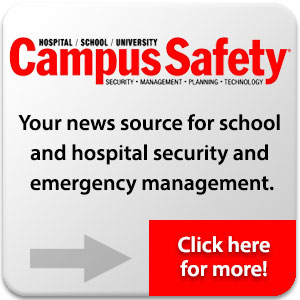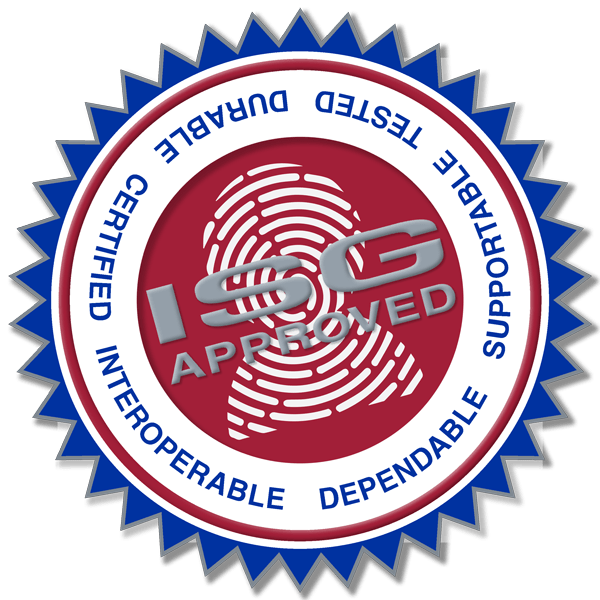Video surveillance is ubiquitous, simply a fact of life in modern society, and our K-12 schools are no exception. However, there is an issue with cameras in schools, and it’s not the one George Orwell warned us about. In many cases, video surveillance systems are being purchased by K-12 campuses with the intent of replacing student supervision personnel.
Combining security cameras with adult staff who can intervene during incidents and provide pupils with “teachable moments” will optimize the effectiveness of cameras and personnel.
Cameras Cannot Supervise Kids
At first glance, replacing supervision staff with cameras seems like a viable, attractive and cost effective approach. With a deeper review, however, it becomes evident that video surveillance cannot effectively supervise students in the K-12 environment. Supervision by its nature is intended to be proactive. In most cases, the aide on your playground is expected to intervene prior to the fight rather than simply report what they observed. This is a trick that cameras have not yet learned. In addition, supervision personnel can act as a part of your early detection process by reporting anything out of the ordinary.
Unlike commercial and industrial organizations, few K-12 schools can afford full-time monitoring of their video surveillance systems and lack an immediate response capability. Passive monitoring by a secretary with a long list of other duties is about the best schools can hope for. With this kind of limitation, video surveillance in the K-12 environment is relegated to a reactive approach at best. In most cases, it becomes an investigatory and forensic tool after the fact.
Deterrence is often both a sales claim and a tacit expectation as schools purchase and install video surveillance systems. If the deterrence factor were effective, no one would ever receive a speeding citation issued by video enforcement. Children and adolescents have far less capacity than adults for the abstract thought process that deterrence requires.
How often in a disciplinary conversation with an adolescent will you get a blank stare or “I don’t know” when you ask them why they did something wrong? If they don’t know why they did whatever it was they did, then any potential deterrence effect on adolescents provided by surveillance cameras alone is highly suspect. What is not suspect, however, is the very real deterrence effect of an adult presence.
Video Surveillance Has Its Place
This article could be construed to this point as an anti-surveillance camera discussion, but nothing could be further from the truth. As practitioners in a school district, we deployed and used a large number of cameras.
This article is a call to understand and intelligently integrate available technology with the human element in our schools. To accomplish this you need to have a clearly understood goal in mind. In addition, you need know what cameras do well, what people do well and how each can be deployed to support the other.
What People Do Well
It is a well documented fact that most disciplinary issues in the K-12 environment take place during unstructured periods of time when students are lightly or potentially even unsupervised: recess, passing time, lunch and the like. Given this, a thoughtfully designed supervision plan to put an adult in the mix during these times will do much to quell unwanted behaviors.
The location of these adults is as important as the timing of their supervision activities. Careful tracking where incidents take place allows you to station supervision personnel to the greatest effect. Locations where unwanted student behaviors manifest will migrate over time. Tracking the location of incidents will allow you to note emerging trends and proactively adjust you supervision plan accordingly.
Training for your supervision personnel is a critical component to consider as well. Professional development for your supervision staff, including crossing guards and bus drivers, should include de-escalation techniques and training in the identification of child/adolescent mental health issues. Couple training with a good reporting protocol, and your supervision staff can and should be an important component of your overall detection and intervention process.
What Cameras Do Well
Surveillance cameras create an unbiased, objective and reviewable visual record of everything taking place in their field of view. This record of exactly what takes place is invaluable to a school administrator. A discussion with the parent of a misbehaving student that starts with “I would like to watch this with you and then we can talk,” is so much more productive and easier to manage than one that starts with “I have a number of reports.”
This unbiased, objective and reviewable visual record can serve a number of positive purposes in a school. In our litigious society, cameras are a superior risk management tool. Courts love unbiased, objective and reviewable visual records. In addition, a camera records a specific location, 24 hours a day, 7 days a week, 365 a year. Surveillance cameras are invaluable when there cannot be a human presence at the location.
Much like the placement of supervision personnel, the placement of surveillance cameras should be determined by the areas where incidents have historically taken place. Then that placement needs to be reviewed over time to assure ongoing effectiveness.
Cameras & Staff Should Support Each Other
Given the cost of a video surveillance system and school budgets, cameras must provide benefits in more than just school security and an active shooter incident. Used correctly, the bulk of the benefit from the use of video surveillance in the K-12 environment is likely to be as a daily operational tool. Consider the following incident:
Your lunch duty aide brings two young men to your office and states they were involved in a fight. In a verbal report, she notes that the much larger of the boys pushed the smaller child down and that she intervened prior to any further escalation. The larger boy is a bit of a bully and has a history of fights on your playground.
You interview both the boys and the smaller child states that the larger boy pushed him down. The larger child pleads his innocence. While you tend to believe the smaller boy, you access the video record of the incident.
In review of the record, you note the duty aide facing away from the young men. During much of the incident, the aide was tending to a girl who appears to have a minor injury. The smaller of the boys approaches the larger boy, kicks him twice, turns to run, and then trips and falls to the ground. At just that time your duty aide turns toward the two boys and intervenes to prevent further escalation. You now have a more complete understanding of the incident and can act accordingly.
An incident like this shows the benefits and shortcomings of both adult supervision and video surveillance in daily operations. Without an adult present, this incident may never have been reported or, even worse, could have escalated. The adult duty aide intervened and prevented an escalation and assured the incident was reported… but the facts that were reported were incorrect. The surveillance camera provided an accurate record of the incident. The two together assured that appropriate fair disciplinary action was quickly taken.
Incidents like the one described above happen at least weekly and often daily in most schools. A well designed video surveillance system can radically reduce the time involved by school administrators in addressing such issues. In addition to saving time, use of the camera system to shorten the period of time between offence and disciplinary action will greatly enhance the deterrence.
School Surveillance Solutions from the ISG
As you deploy or review the use of your surveillance system, remember that the system is a tool… a very good tool, but still just a tool. Have specific goals in mind. If you wish to address an active shooter, an unmonitored camera will give you a good record of the event but do little to provide early warning. In daily operations, if you are looking simply to catch and punish kids after an incident, cameras are your answer. If you wish to intervene prior to an incident or use the incident as a teaching moment to help prevent future issues, trained student supervision personnel are the answer. The two together are the best answer.
Know what you want to accomplish and plan accordingly. Intelligent integration of video surveillance and the human element can and should greatly enhance the benefits of each; both in enhanced school security and more effective daily operations.
The ISG offers trusted solutions from many partners that can help your school with the solutions it needs to create a safe and secure school environment.
In addition to video surveillance solutions, your local ISG dealer member can also integrate photo ID card issuance, tracking, visitor management, access control and campus card services into a complete campus-wide solution for your school.
Contact us to talk with your local ISG member about solutions for your campus.
Original article written by Guy Bliesner for Campus Safety Magazine.


